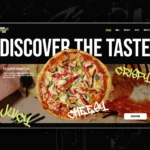Why Restaurant Website Features Matter More Than Ever
- navidsevendiz
- 2025 restaurant trends, best restaurant website features, digital menu for restaurants, features of a restaurant website, food business website ideas, Local SEO for Restaurants, mobile-friendly restaurant site, online food ordering system, responsive restaurant website, restaurant marketing tools, restaurant online reservations, Restaurant SEO Tips, restaurant website design, social media for restaurants, web design for restaurants
- 0 Comments
In 2025, diners expect more from a restaurant’s online presence than ever before. A restaurant website isn’t just a place to find an address or view a menu — it’s a full digital experience that should reflect the quality, personality, and professionalism of your food business. If your site isn’t meeting modern standards, you’re likely losing customers to competitors who offer a smoother, faster, and more engaging experience
In this guide, we’ll explore the essential features every restaurant website should have in 2025 to stay competitive and thrive. View our latest projects
1. Mobile-Optimized, Responsive Design
With mobile users making up the majority of online traffic, a mobile-first design is no longer optional — it’s the standard.
Key Elements:
- Menus that adapt to small screens
- Large, tap-friendly buttons
- Fast load times on 4G/5G networks
- Smooth scrolling and intuitive navigation
A responsive design adjusts seamlessly to any screen size, from smartphones to tablets and desktops. It ensures users have a consistent experience across all devices, which increases time on site, decreases bounce rate, and improves SEO rankings. It’s also essential for Google’s mobile-first indexing.
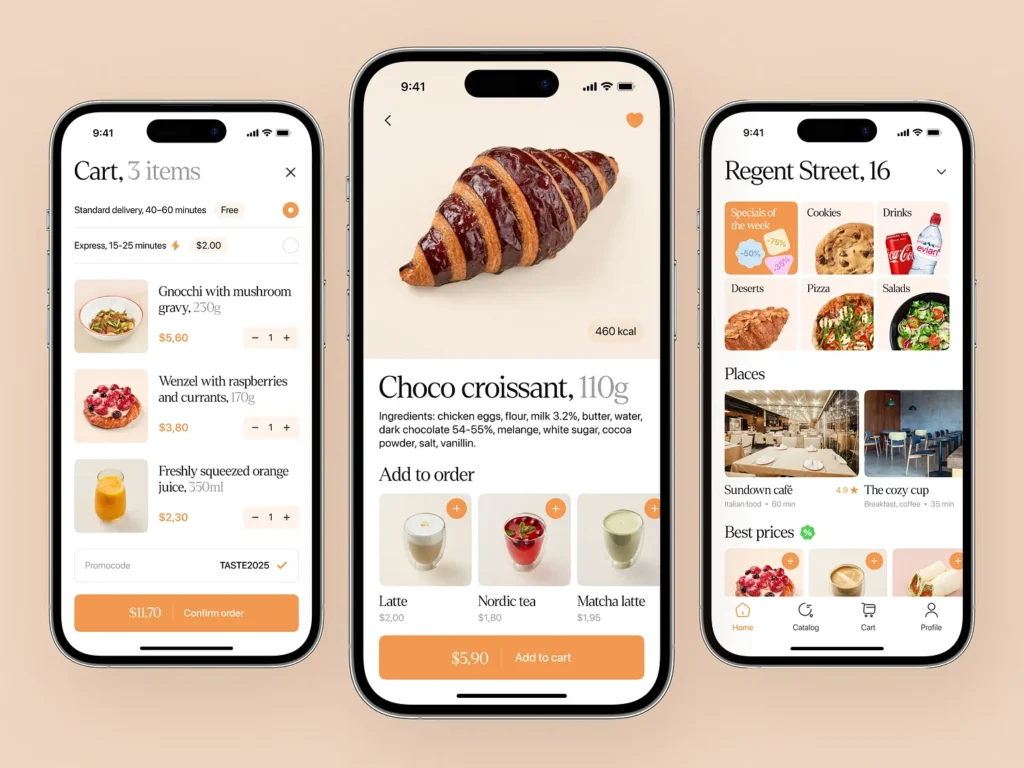
2. Easy-to-Update, Interactive Menus
PDF menus are outdated and bad for SEO. Your menu should be interactive, searchable, and easy to update from the backend.
Must-Have Features:
- Dish photos and pricing
- Dietary and allergen filters (gluten-free, vegan, spicy)
- Descriptions with keywords (e.g., “wood-fired pizza”)
- Weekly or seasonal updates
Interactive menus improve user experience by making it easier to explore offerings and filter for preferences. An up-to-date digital menu also reduces the need for printed versions and allows you to make instant changes based on availability, seasonal items, or promotions. For more inspiration, visit MenuDrive.
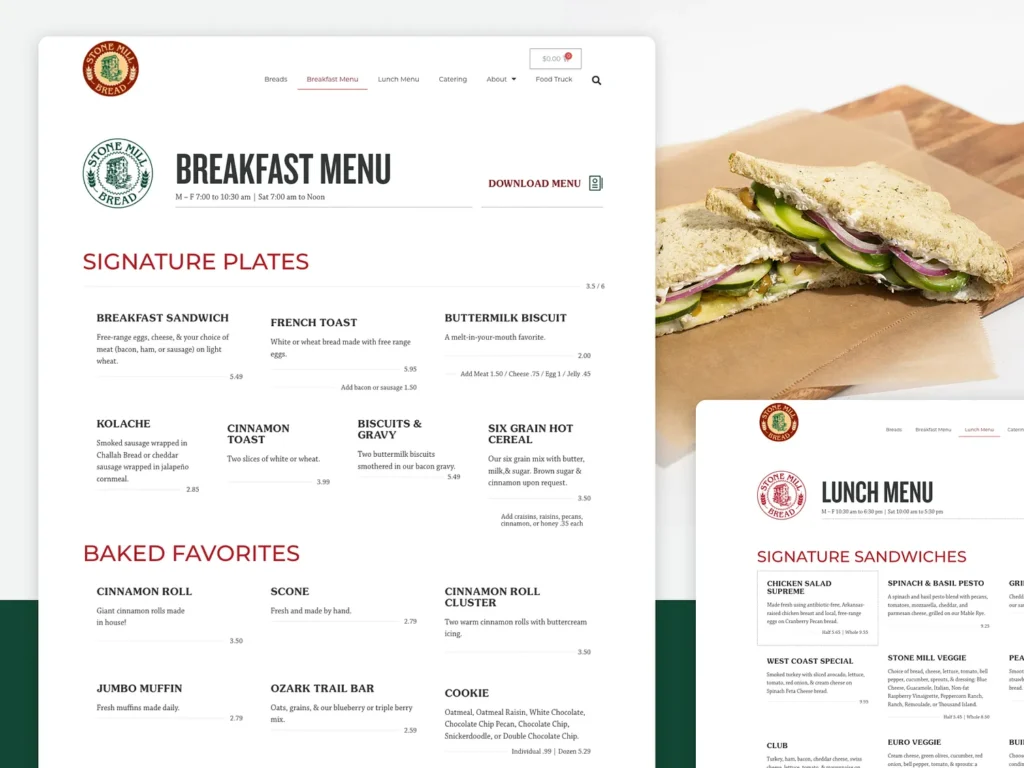
3. Online Ordering and Reservation Systems
Whether you’re running dine-in, delivery, or takeout, your website should support:
- Real-time table reservations
- Online ordering for delivery and pickup
- Integration with platforms like OpenTable, Toast, DoorDash, or in-house systems
These systems streamline the customer experience, reduce errors, and increase conversions. Offering direct ordering from your site means you can avoid third-party commissions and maintain better control over your customer data. Automated emails and SMS confirmations add a professional touch.
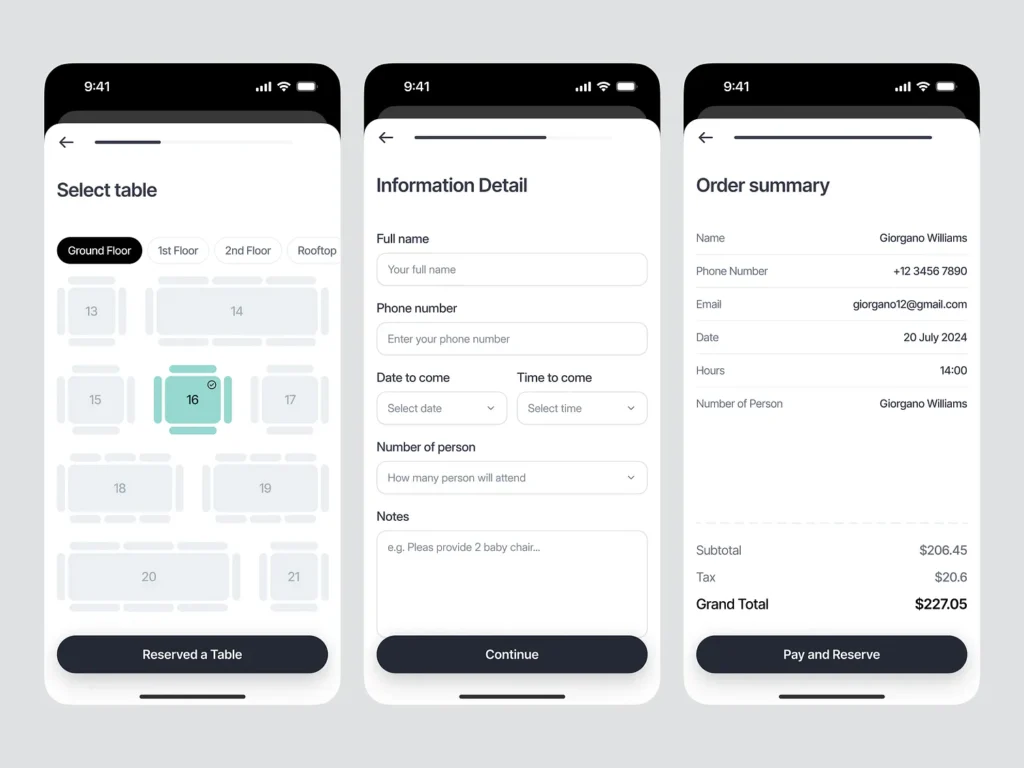
4. Location and Contact Information That’s Easy to Find
Your address, phone number, and hours should be visible within seconds of landing on your homepage.
Include:
- Google Maps integration
- Click-to-call phone numbers
- Business hours by day
- Contact form for private events or catering
This feature is especially critical for local SEO. Consistent NAP (Name, Address, Phone) information across your site and third-party directories helps your restaurant show up in local searches and Google Maps. Contact us to integrate these features into your website.
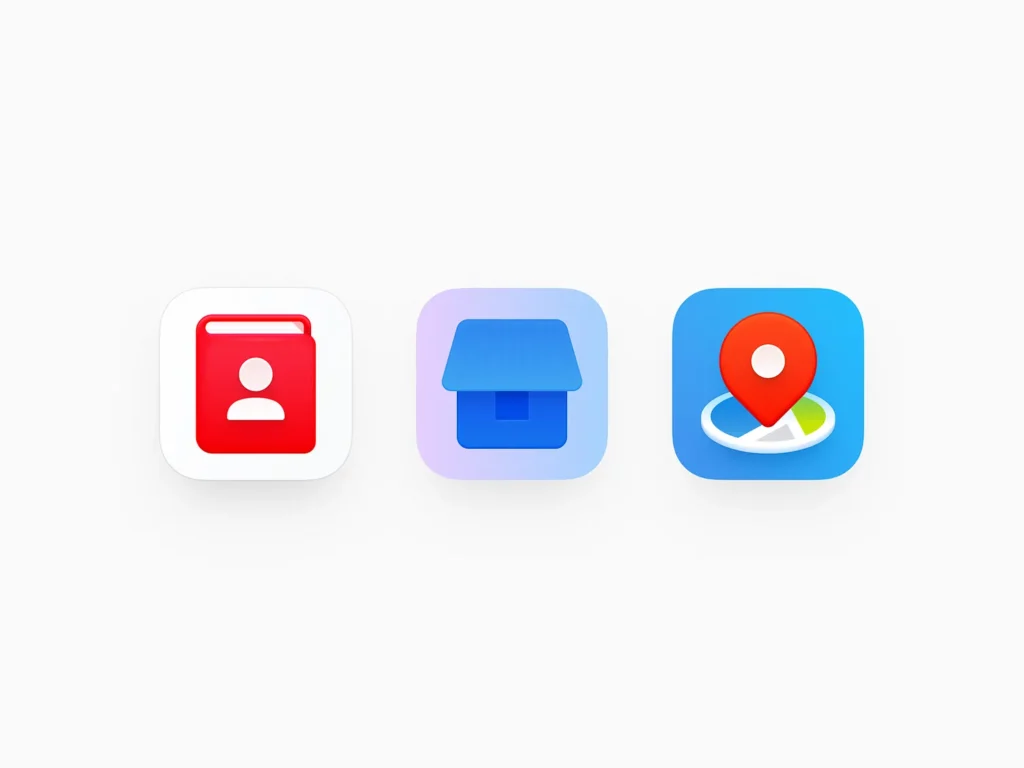
5. SEO-Optimized Content and Blog
A blog isn’t just for big corporations. Regularly updated content improves SEO and helps customers connect with your brand.
Content Ideas:
- Behind-the-scenes chef interviews
- Seasonal menu updates
- Recipes or cooking tips
- Local food events or festivals
Each blog post should be optimized for a long-tail keyword relevant to your audience. Use headings (H2, H3), internal and external links, image alt text, and metadata to strengthen on-page SEO. Posting regularly (at least once a month) helps signal to Google that your site is active and trustworthy. Explore our services to see how we can help you with ongoing content strategy. Learn more about SEO for restaurants from Moz.

6. Photo and Video Galleries That Tell a Story
Food is visual. Show off your dishes, your ambiance, and your team with professional-quality images and videos.
Tips:
- Hero images and video backgrounds
- Virtual tours of your restaurant
- Customer-generated content via social media embeds
- Optimize all images with alt text and proper compression
High-quality visuals create emotional connections and can strongly influence customer decisions. Videos of chefs preparing meals or a walkthrough of the dining area help customers visualize their experience, increasing the likelihood of a visit or reservation. Learn more at Pexels Guide to Restaurant Photography.
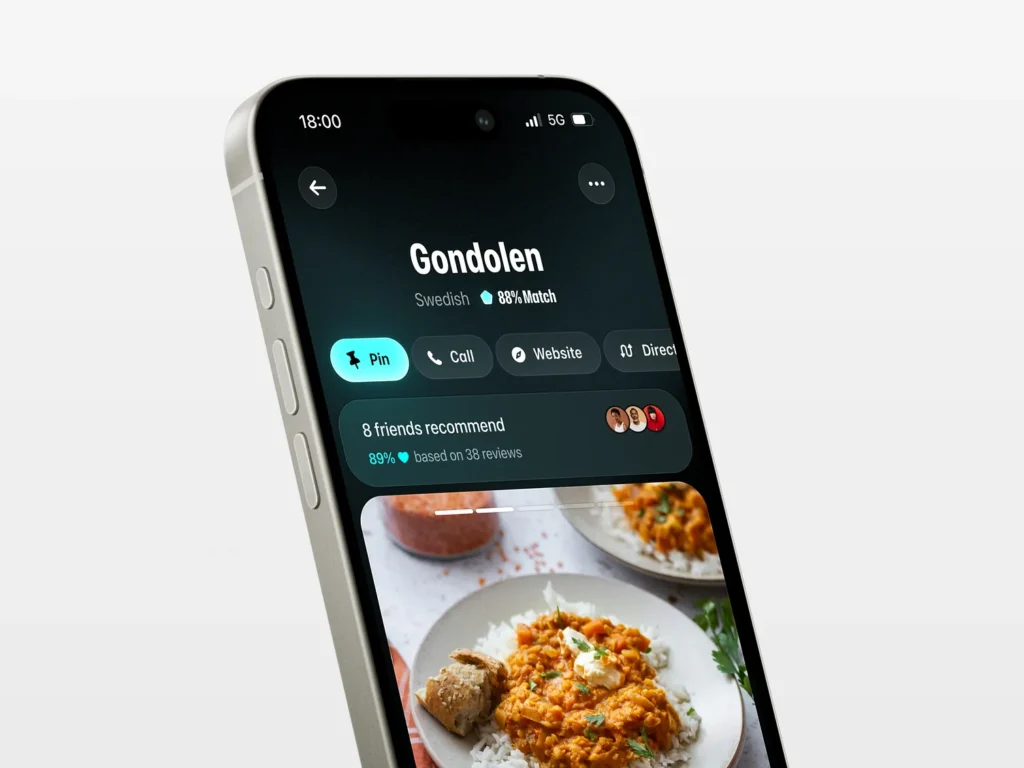
7. Social Media Integration
Connect your online presence by embedding your latest Instagram posts, TikTok videos, or Facebook updates.
Why it matters:
- Builds trust and authenticity
- Shows customers you’re active and current
- Encourages follows and shares
Real-time social media content makes your site dynamic. It also gives potential customers a sense of your vibe and community involvement. Make sure to link to all your social accounts and feature user-generated content when possible.
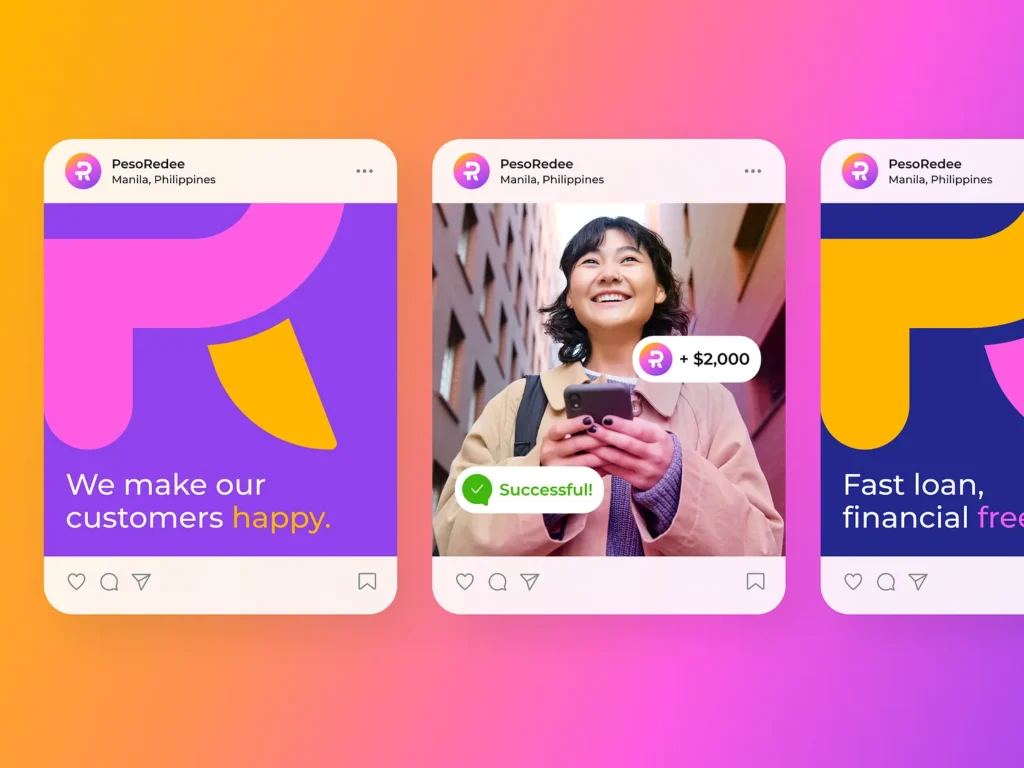
8. Testimonials and Reviews
Customer reviews build credibility. Showcase top reviews from Google, Yelp, or TripAdvisor directly on your site.
Bonus:
- Add a call-to-action to leave a review
- Include video testimonials if possible
- Use schema markup for rich snippets in Google results
Displaying reviews not only builds trust but also improves your SEO. Google favors pages with structured data (schema), and positive feedback increases your click-through rates. Encourage satisfied customers to share their experiences and highlight those reviews prominently.
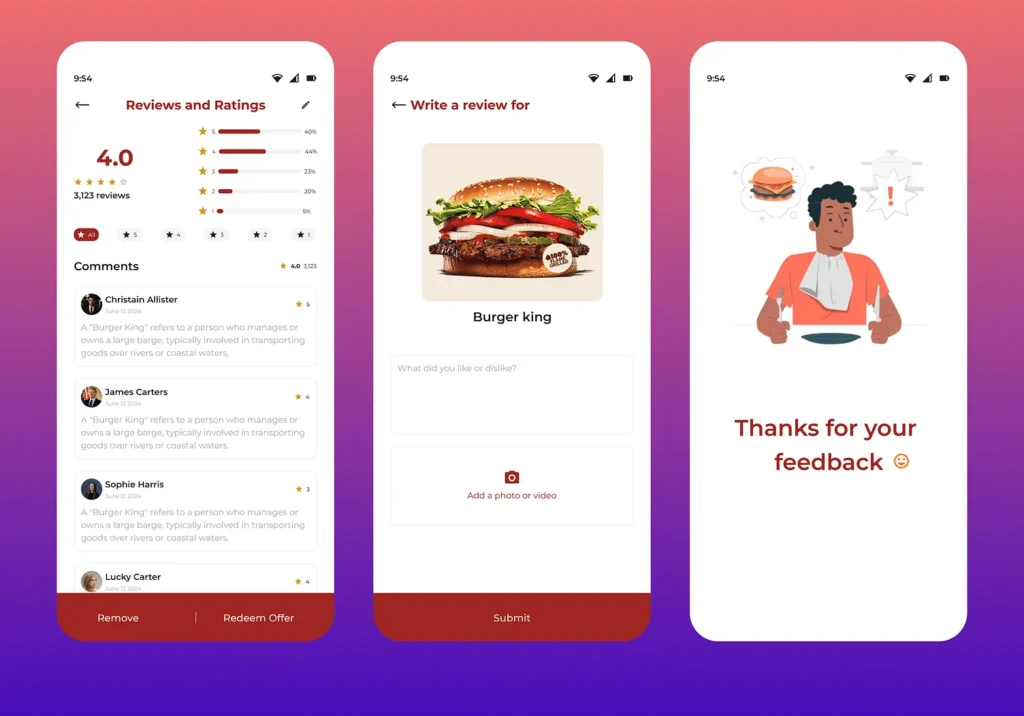
9. Accessibility and Speed
Google now prioritizes websites that are accessible and load quickly.
Checklist:
- ADA-compliant fonts and contrast
- Alt text for all images
- Mobile speed score over 90 (use Google PageSpeed Insights)
- Lazy loading for images and videos
Accessibility ensures your site can be used by everyone, including users with disabilities. Meanwhile, a fast-loading website reduces bounce rates and keeps visitors engaged. Optimize scripts, compress images, and use a reliable hosting provider to ensure speed.
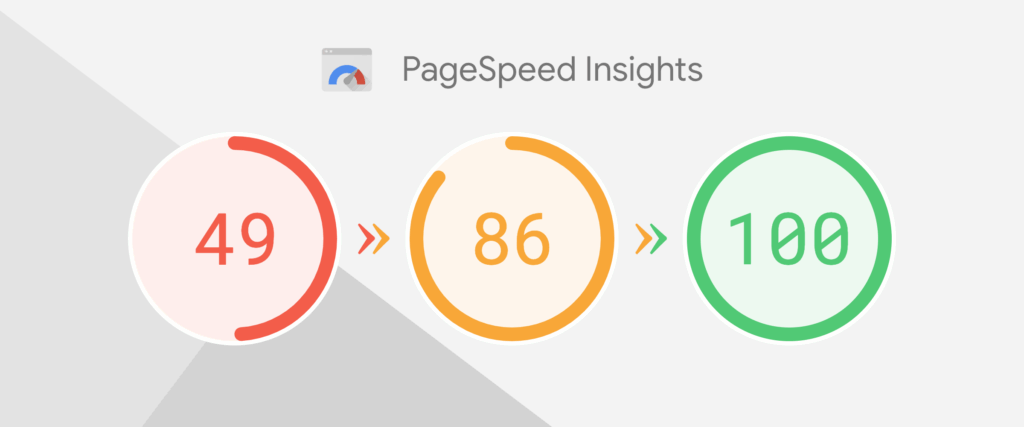
10. Clear Calls-to-Action (CTAs)
Every page should have a clear goal:
- “Book a Table”
- “Order Now”
- “View Menu”
- “Contact Us”
Place CTAs prominently in your header, hero section, and throughout the site.
Well-placed CTAs guide the user journey and encourage action. Use contrasting colors, concise language, and repetition to boost click-through rates. You can also A/B test different CTAs to see what works best.
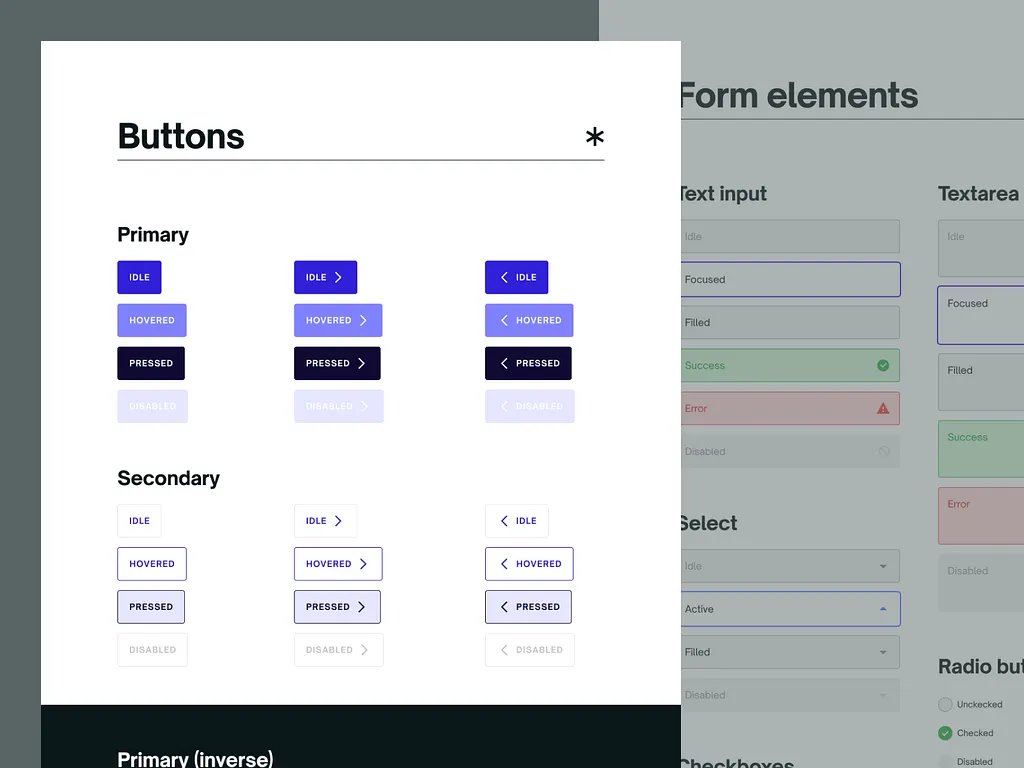
Conclusion: Build a Restaurant Website That Delivers Results
In 2025, a restaurant website is more than an online brochure — it’s a growth engine. By including the features above, you ensure your site meets modern expectations, improves your online presence, and helps drive more reservations, orders, and repeat customers.
Need help building or redesigning your restaurant website? Sevendiz specializes in mobile-friendly, SEO-optimized websites that convert visitors into loyal customers.
👉 Contact us today to get started, see our portfolio, or learn more about us.
Frequently Asked Questions (FAQ)
1. Why is mobile optimization essential for restaurant websites in 2025?
Mobile users dominate web traffic. If your site isn’t optimized, you’ll lose potential customers.
2. Can I update my restaurant’s menu without a developer?
Yes! With the right CMS, you can easily add or edit dishes, prices, and photos.
3. Should I use third-party platforms for online ordering?
You can, but direct ordering on your own site saves commission fees and gives you full control.
4. What is schema markup and why is it important?
Schema helps search engines better understand your content, improving your visibility in search results.
5. How can I improve my restaurant’s local SEO?
Keep your Name, Address, and Phone (NAP) consistent and use local keywords and Google Maps.
6. Do I need a blog on my restaurant website?
Yes. Blogging helps with SEO and allows you to share updates, events, and recipes with your audience.
7. What type of images should I use on my website?
High-resolution, optimized photos of your food, ambiance, and team work best.
8. How fast should my website load? Ideally under 3 seconds. Use tools like Google PageSpeed Insights to test.
9. How do I encourage customers to leave reviews?
Add CTAs, send follow-up emails, or offer a small incentive like a discount.
10. What’s the best way to get started with a restaurant website redesign?
Contact a professional agency like Sevendiz that specializes in restaurant websites.
